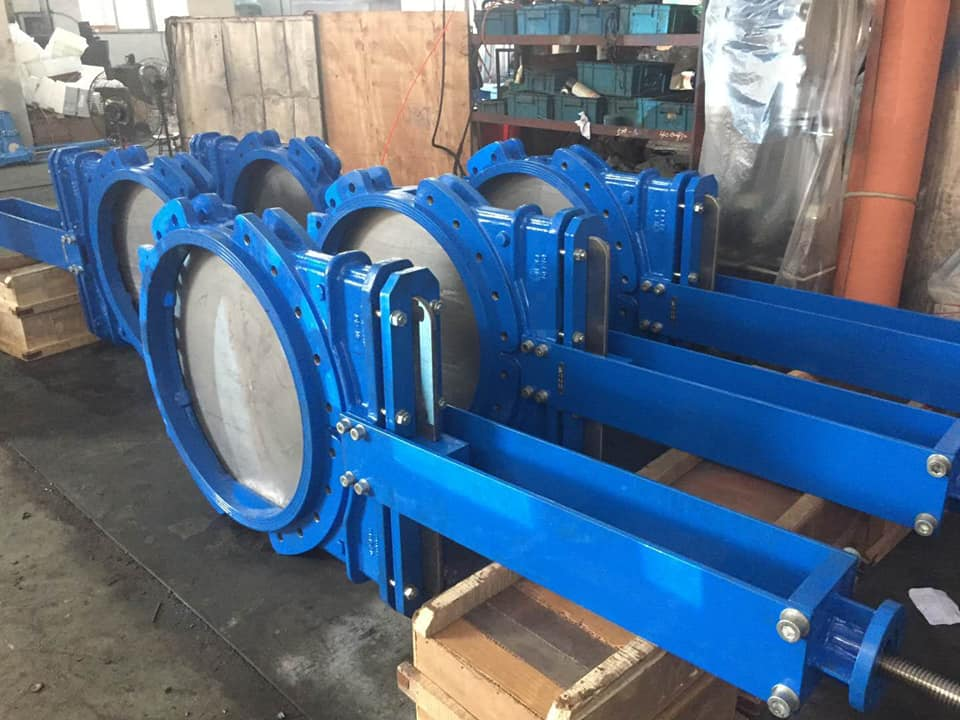Knife Gate Valve Manufacturer in USA
SVR Global is the top rated Knife gate valve manufacturer in USA providing high-quality valves to the mining, water, and chemical sectors in Washington, Oregon, and Indianapolis. An excellent valve for managing slurries and other viscous fluids is a knife gate valve, which has a sharp-edged blade designed to cut through and scrape off material accumulation on the sealing surfaces.
It is frequently utilized in situations where a tight shut-off is necessary and when there is a lack of available area. The valve is available in a variety of sizes and materials to suit diverse purposes, and it may be operated manually, by pneumatic, electric, or other actuators. When it’s open, the fluid flow is restricted; when it’s closed, the fluid flow is unhindered.
Types:
•Uni-directional knife gate valve
•Bi-directional knife gate valve
•Slurry knife gate valve
Industries:
•Chemical Industry
•Petrochemical Industry
•Power generation
•Pulp and paper
•Oil and gas
•Refining
•Mining industry
Applications:
•Knife gate valves are frequently employed in mining and mineral processing to regulate the flow of slurry and tailings, mixes of water and finely crushed particles.
•Knife gate valves are used in wastewater treatment facilities to regulate the flow of sludge, which is a combination of water and particles.
•Knife gate valves are used in the pulp and paper industry to regulate the flow of pulp, which is made up of a combination of water and wood fibers. They can manage the pulp’s high consistency and offer a tight shut-off to stop leaks.
•Knife gate valves are used in chemical processing to regulate the flow of corrosive and abrasive substances.
•Knife gate valves are used in power generation to regulate the flow of materials such as ash slurry in coal-fired power plants.
•Knife gate valves are used in the manufacturing of steel to regulate the flow of slag, a waste product of the steel-making process. The high temperature and abrasiveness of the slag can be handled by them, and they also offer a tight shut-off to avoid leaking.
•Oil and gas refineries: In order to regulate the flow of corrosive and abrasive materials, such as crude oil and refined products, knife gate valves are employed in oil and gas refineries.
•Municipal water and sewage systems: To regulate the flow of sewage and other materials, knife gate valves are used in municipal water and sewage systems.
Advantages:
•Offers a secure shut-off.
•Unaffected by corrosive and abrasive substances.
•A valve with a low pressure drop.
•Simple to maintain and fix.
•Compact and easy to use design.
•Has both manual and automated activation options.
•Perfect for working with slurries and other thick substances.
•Suitable for situations involving high pressure and temperature.
•Provides cheap ownership costs.
SVR Global is most trusted Knife gate valve manufacturer in USA with amazing customer satisfaction records.
Body materials: WCB, WC6, WCC, LCB, LCC, cast iron, Ductile Iron, SS316, SS304
Size: DN50 to DN2000
Class: 150 to 300
Nominal Pressure: PN6 to PN40
Operation: Handwheel, Electric actuated, Pneumatic Actuated, Gear operated
Ends: Wafer, Lug, Flanged

